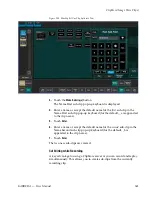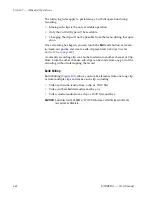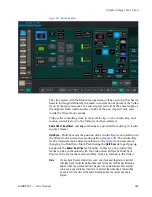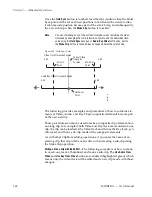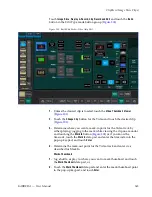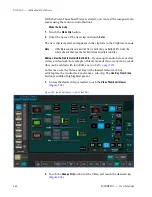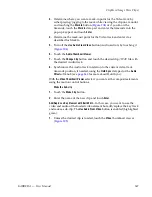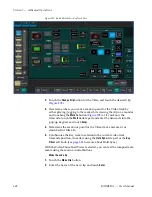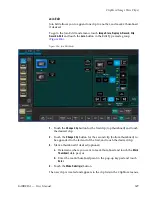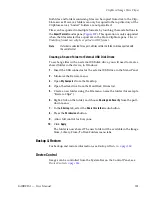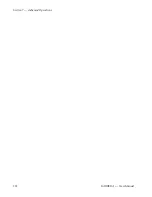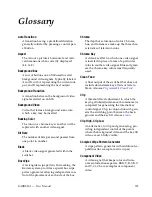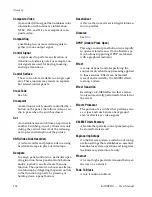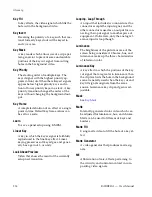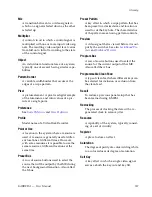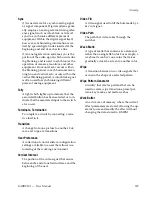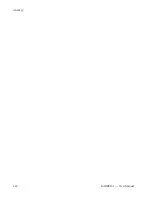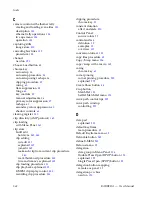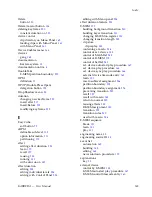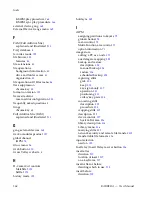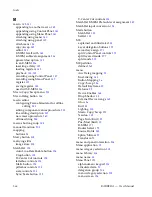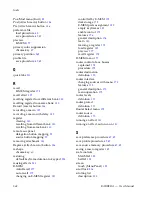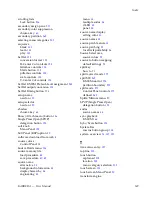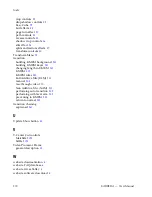
KARRERA — User Manual
355
Glossary
Field
One scan of an interlaced video image. In in-
terlace systems, two fields are required to
make a complete picture (video frame) be-
cause alternate lines are scanned.
Fill Video
A video signal which fills a hole cut in back-
ground video by a key control signal.
Fixed Linear Key
A linear key that uses predetermined Clip
and gain settings that are not adjustable.
Flip-Flop
A transition where the sources selected on
the background buses (for example, preset
and program) of an ME are exchanged at the
end of a transition. The original preset bus
source becomes selected on the program bus,
and the original program bus source be-
comes selected on the preset bus.
FPGA
Field Programmable Gate Array.
Frame
One complete scan of a video image. For in-
terlace video, alternate lines are scanned, and
so a frame containing all the picture informa-
tion consists of two fields.
Frame Rate
The number of frames presented per second.
For interlace systems the frame rate is half
the field presentation rate.
Gain
An amplification factor applied to a key con-
trol signal by a keyer that determines how
much, if any, of the background and key fill
video will be mixed together at the key edge
areas. Low gain (1, or unity) generally results
in a linear key.
General Purpose Interface (GPI)
An interface that allows limited remote con-
trol of some of a device’s functions.
House Sync
Sync generated within a facility that is used
as a reference for generating and/or timing
other signals.
Hue
The location of a color on the color spectrum
(i.e. red, yellow, green, blue). Chroma, hue,
and luminance make up the three character-
istics of television color.
Image Store
A device that captures, saves, and outputs a
still video image.
Interlace
A system of video scanning where the odd
and even numbered lines of a picture are pre-
sented consecutively as two separate inter-
leaved fields. The two fields required to
make a complete picture are called a frame.
Jitter
An undesirable variation in the timing of
transitions in a digital signal.
Joystick
A hardware positioner with control of multi-
ple axes.
Key
An effect where a portion of a background
scene is replaced by a new video. Key cut
and key fill signals are involved, though in
some cases the same signal may be used for
both (self key).
Key Cut
In key effects, the key cut signal is used to
specify where to cut a hole in the background
that will be filled with the key fill video. The
key cut signal determines the shape of the
key effect.
Summary of Contents for KARRERA
Page 1: ...KARRERA VIDEO PRODUCTION CENTER User Manual Software Version 4 0 071880500 MARCH 2012 ...
Page 3: ...KARRERA VIDEO PRODUCTION CENTER User Manual Software Version 4 0 071880500 MARCH 2012 ...
Page 14: ...14 KARRERA User Manual Contents ...
Page 16: ...16 KARRERA User Manual Preface ...
Page 52: ...52 KARRERA User Manual Section 2 User Setups and Preferences ...
Page 126: ...126 KARRERA User Manual Section 3 Video Mix Effects ...
Page 156: ...156 KARRERA User Manual Section 4 Switcher Control ...
Page 216: ...216 KARRERA User Manual Section 6 Switching Basics ...
Page 286: ...286 KARRERA User Manual Section 7 Advanced Operations Figure 157 Copy Swap Menu ...
Page 315: ...KARRERA User Manual 315 Image Store Stills Figure 184 Freeze Mode Button ...
Page 352: ...352 KARRERA User Manual Section 7 Advanced Operations ...
Page 360: ...360 KARRERA User Manual Glossary ...

